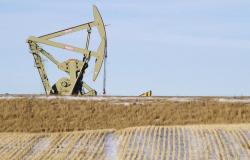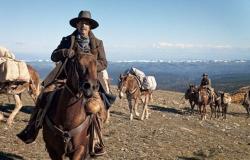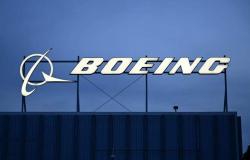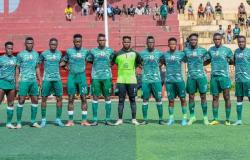A United Launch Alliance Atlas V rocket with Boeing’s CST-100 Starliner spacecraft on board launches from Space Launch Complex 41 at the Cape Canaveral Space Station, Wednesday, June 5, 2024, in Florida. NASA’s Boeing Crew Flight Test is the first astronaut launch of the Boeing CFT-100 spacecraft and United Launch Alliance Atlas V rocket to the International Space Station as part of the agency’s Commercial Crew Program. The flight test, launching at 10:52 a.m. EDT, serves as an end-to-end demonstration of Boeing’s crew transportation system and will transport NASA astronauts Butch Wilmore and Suni Williams to and from the orbiting laboratory. Credit: NASA/Joel Kowsky
NASA Astronauts Butch Wilmore and Suni Williams are in orbit aboard Boeing’s Starliner during its maiden crewed flight to the ISS, where they will conduct system tests and participate in public outreach activities, highlighting the commitment of NASA in commercial space partnerships.
NASA astronauts Butch Wilmore and Suni Williams are safely in orbit during the first crewed flight test aboard Boeing’s Starliner spacecraft bound for International Space Station (ISS).
As part of NASA’s Boeing crew flight test, the astronauts blasted off Wednesday at 10:52 a.m. EDT aboard a United Launch Alliance (ULA) Atlas V rocket from Space Launch Complex-41 from the Cape Canaveral space station in Florida. complete test of the Starliner system.
On Wednesday, June 5, 2024, a United Launch Alliance Atlas V rocket carrying Boeing’s CST-100 Starliner spacecraft was successfully launched from Space Launch Complex 41 at the Cape Canaveral Space Station in Florida. This significant event marked the first launch of astronauts aboard the Boeing CST-100 spacecraft and Atlas V rocket as part of NASA’s Commercial Crew Program. Credit: NASA/Joel Kowsky
Historic firsts and NASA commitments
“Two bold NASA astronauts are on track for this historic first test flight of an entirely new spacecraft,” said NASA Administrator Bill Nelson. “Boeing’s Starliner marks a new chapter in American exploration. Human spaceflight is a daring task – but that’s why it’s worth it. This is an exciting time for NASA, our commercial partners, and the future of exploration. Go Starliner, go Butch and Suni! »
As part of NASA’s Commercial Crew Program, the flight test will help validate the transportation system, launch pad, rocket, spacecraft, operational capabilities in orbit and return to Earth with astronauts on board as the agency prepares to certify Starliner for rotation missions to the space station. Starliner has already completed two uncrewed orbital flights, including a test to and from the space station, as well as a platform abort demonstration.
On June 5, 2024, the Boeing CST-100 Starliner spacecraft, atop a United Launch Alliance Atlas V rocket, launched from Cape Canaveral, marking its first crewed mission to the ISS with astronauts Butch Wilmore and Suni Williams. Credit: NASA/Joel Kowsky
Mission monitoring: from launch to docking
“With Starliner launching, rocket separating and arriving in orbit, Boeing’s crew flight test is on track,” said Mark Nappi, vice president and program director of Boeing commercial crew. “Everyone is focused on providing Suni and Butch with a safe and comfortable ride and completing a successful test mission from start to finish. »
During Starliner’s flight, Boeing will monitor a series of automatic spacecraft maneuvers from its Mission Control Center in Houston. NASA teams will monitor space station operations throughout the flight from the mission control center at the agency’s Johnson Space Center in Houston.

Boeing’s CST-100 Starliner made its first crewed flight to the ISS on June 5, 2024, demonstrating its launch system as part of NASA’s Commercial Crew Program. Credit: NASA/Joel Kowsky
A milestone for crewed space missions
“The crew flying Starliner represents more than a decade of work by the Commercial Crew Program and our partners at Boeing and ULA,” said Steve Stich, commercial crew program manager at the Johnson Space Center. NASA in Houston. “For many of us, this is a career-defining moment, bringing new crew transportation capability to our agency and our country. We’ll take it step by step, putting Starliner through its paces and remaining vigilant until Butch and Suni land safely on Earth at the end of this test flight.
Starliner will dock autonomously with the forward-facing port of the station’s Harmony module at approximately 12:15 p.m. on Thursday, June 6, and will remain at the orbiting laboratory for approximately a week.
Role of astronauts and space station integration
Wilmore and Williams will help verify that the spacecraft is operating as designed by testing the environmental control system, displays and control system, and maneuvering the thrusters, among other tests during flight.
After safe arrival at the space station, Wilmore and Williams will join the Expedition 71 crew of NASA astronauts Michael Barratt, Matt Dominick, Tracy C. Dyson and Jeanette Epps, and Roscosmos cosmonauts Nikolai Chub, Alexander Grebenkin and Oleg Kononenko.
Extensive media coverage and public engagement
NASA coverage of arrivals and in-flight events is as follows (all times Eastern and subject to change based on real-time operations):
Coverage of the mission will continue on NASA television channels throughout Starliner’s flight and will resume on NASA+ before docking.
Thursday June 6
9:30 a.m. – Arrivals coverage begins on NASA+, the NASA app and YouTube, and continues on NASA Television and the agency’s website.
3:30 p.m. – Post-docking press conference at NASA Johnson with the following participants:
Jim Free, NASA Associate Administrator Steve Stich, manager of NASA’s commercial crew program Jeff Arend, Systems Engineering and Integration Manager, NASA International Space Station Office Mark Nappi, vice president and program director, Commercial Crew Program, Boeing the agency’s website.5:50 p.m. – NASA Administrator Bill Nelson, Deputy Administrator Pam Melroy, Associate Administrator Jim Free, Associate Administrator for Space Operations Ken Bowersox and Johnson Space Center Director Vanessa Wyche will speak with Wilmore and Williams about their launch aboard the Starliner spacecraft.
Coverage of the Earth to Space call will stream live on NASA+, NASA Television, the NASA app, YouTube and the the agency’s website.
8:50 a.m. – NASA astronauts Wilmore and Williams will tour Starliner.
the agency’s website.Monday June 10
11:00 a.m. – Williams will speak to students at Sunita L. Williams Elementary School in Needham, Massachusetts, during an event aboard the space station.
Coverage of the Earth to Space call will stream live on NASA+, NASA Television, the NASA app, YouTube and the the agency’s website.
the agency’s website.
The official portrait of the NASA Boeing Crew Flight Test crew. On the left, Suni Williams, who will serve as pilot, and on the right, Barry “Butch” Wilmore, commander of the spacecraft. Credit: NASA
Meet the experienced NASA crew
Wilmore is the mission commander. A veteran of two spaceflights, Wilmore has 178 days in space under his belt. In 2009, he served as a pilot aboard the Space Shuttle Atlantis for mission STS-129. Additionally, Wilmore served as flight engineer for Expedition 41 until November 2014, when he took command of the space station following the arrival of the Expedition 42 crew. Earth the following March. Before being selected by NASA in 2000, this father of two obtained his baccalaureate and master’s degree in electrical engineering from Tennessee Technological University, Cookeville, before earning another degree master’s degree in aeronautical systems from the University of Tennessee, Knoxville. He also graduated from the United States Naval Test Pilot School, Patuxent River, Maryland, and completed four operational deployments during his tenure as a naval officer and fleet aviator.
Williams is the spacecraft pilot for the flight test. Williams spent 322 days in space during two missions: Expedition 14/15 from 2006 to 2007 and Expedition 32/33 in 2012. The Massachusetts native also completed seven spacewalks, totaling 50 hours and 40 minutes. Before his career at NASA began in 1998, Williams graduated with it. bachelor’s degree in physical sciences from the US Naval Academy, Annapolis, Maryland, before obtaining it Masters in Engineering Management from the Florida Institute of Technology in Melbourne. In total, she has accumulated more than 3,000 flight hours on more than 30 different aircraft.
NASA’s Commercial Crew Program achieved its goal of safe, reliable, and cost-effective transportation to and from the International Space Station from the United States through a partnership with American private industry. This partnership changes the history of human spaceflight by opening access to low Earth orbit and the space station to more people, science and commercial opportunities. The space station remains the springboard to NASA’s next big leap in space exploration, including future missions to the Moon under Artemis and, ultimately, March.









